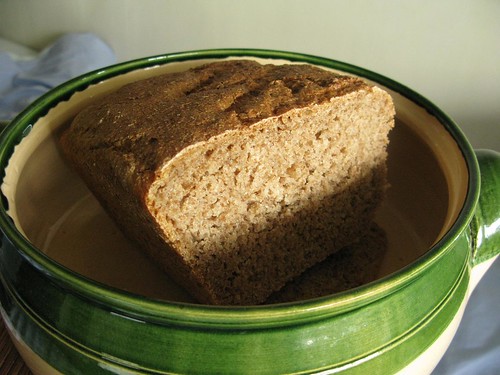
But for something special, look to the classic soughdough recipes. Pane All'olio is a tasty Italian bread, with its distincitive sour characteristics combining nicely with the olive oil. The secret to a great crust on your bread is to cook it in a very hot oven, on an unglazed terracotta tile, and make sure to mist the sides of the oven with water during the first 10 minutes of cooking. If you're lucky, your local tile shop may simply give you one of their tiles. To transport your dough onto the hot tile, its useful to have a "bakers peel" - a thin flat shovel, either wooden or metal. Also a large piece of unbleached linen cloth is a useful item to get hold of, for letting the dough rest in, to give it its shape. Dough tends not to stick to linen, if its well floured. (A tea towel would also work)
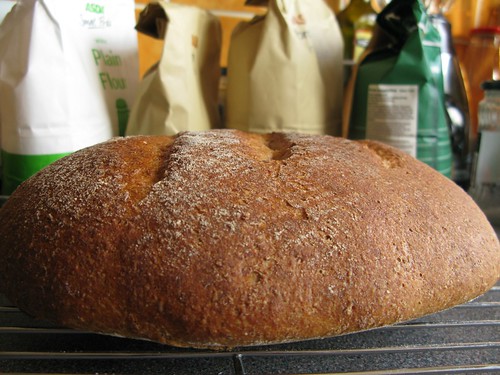
Down to business! Here's how to make another Italian favourite:
Ciabatta
¾ cups / 160ml / 6 fl oz Sourdough Starter
1 cup white flour
¾ cup water
325 g / 11½ oz / 3 cups white flour (I used "brown" for added nutriants. Probably half wholemeal/white would also work, but you may need slightly more water to compensate)
200 ml / 7 fl oz / 1 scant cup tepid water
¼ tsp active dry yeast
½ tsp sugar
30 ml / 2 tbsp soya milk
30 ml / 2 tbsp olive oil
1½ tsp salt
- Put the ¾ cups soughdough starter into a large bowl, making sure to replenish your remaining starter with equal amounts of white flour and water.
- To your bowl, add the 1 cup white flour and ¾ cup water, mix well for 10 minutes, folding the mixture using a spoon to try to capture as much air as possible.
- Cover your bowl and leave overnight (at least 12 hours) at room temperature.
- The next day, your soughdough should be healthy and bubbling a little, ready for some leavening action.
- Add the remainder of the flour on top of the starter, and make a well in the centre. Add tepid water to the centre, and then the yeast and sugar, stirring a little to dissolve, and leave the yeast to activate and start to bubble, (15 mins)
- Add the remainder of the ingrediants, and mix into a fairly wet dough. Continue to knead for 10 minutes, trying not to add too much more flour if its too sticky - the dough should be like this.
- Leave in a warm area for 1 hour, until trippled in size.
- Divide into 2 portions, and, trying not to expel too much air, tip dough onto a well floured piece of linen, and gently shape into loaves.
- Preheat your oven, with the baking stone/tile, to 220 degrees celsius.
- Leave to rise for a further 30 mins, then tip each loaf in turn onto your peel, and into the very hot oven, onto your baking stone/tile.
- Mist the sides of the oven with water, and again every 3 minutes for the next 10.
- Bake for a total of 30 minutes, then remove from oven and leave to cool on a wire rack. The underside should sound hollow when tapped.
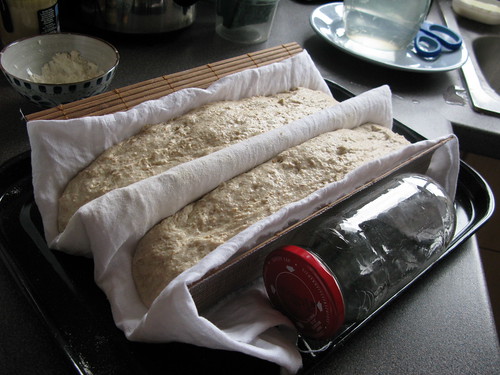

So, armed with a litter of freshly baked ciabatta loaves, I set off this afternoon to a friends house for a Sunday roast. My loaves were promptly cut into slices, and served up with some olive oil and balsamic vinegar, and didn't last long, as we waited for the main dish to be served.
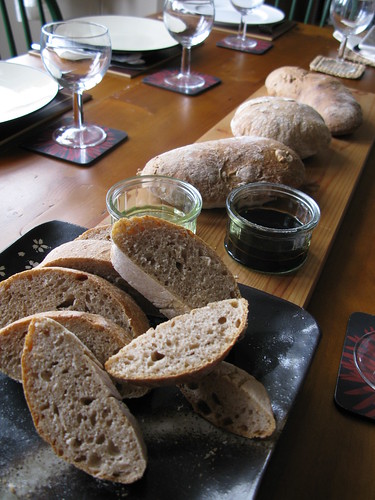
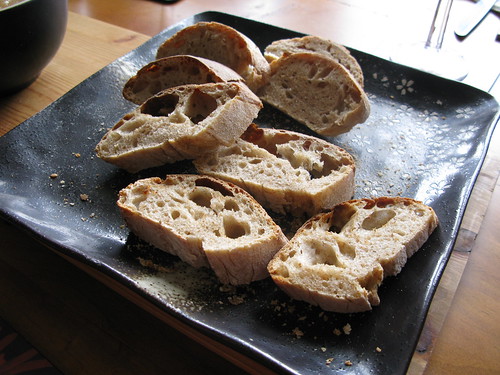
Amy had done a fantastic job with the main course, and I was extremely well catered for. I had roast potatoes and parsnips, stuffed portabello mushrooms, with boiled carrots and french beans on the side, and applesauce on top. For dessert, I had a fruit salad all to myself, full of strawberries, kiwi, orange and apple. Simply delicious!
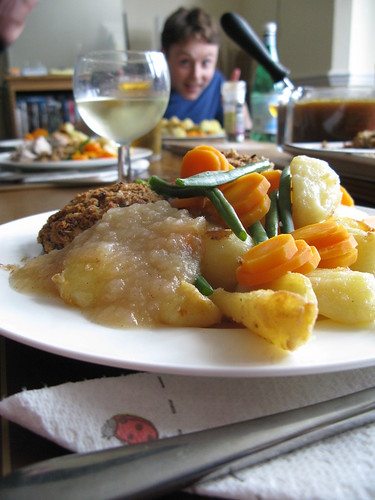
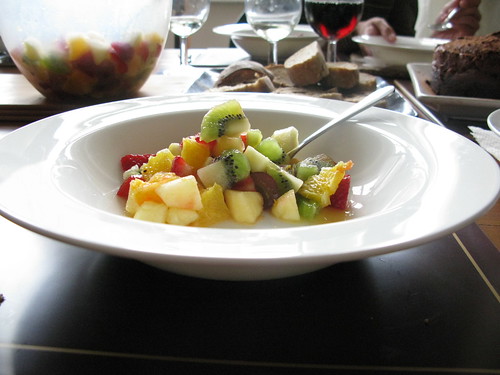
Cheers!



